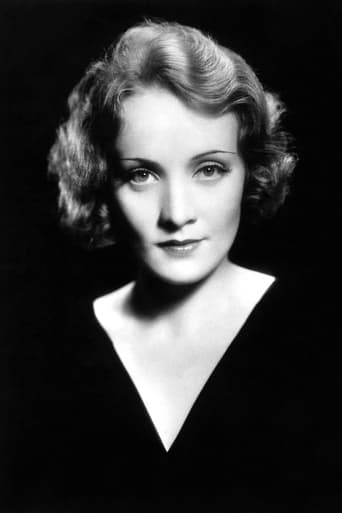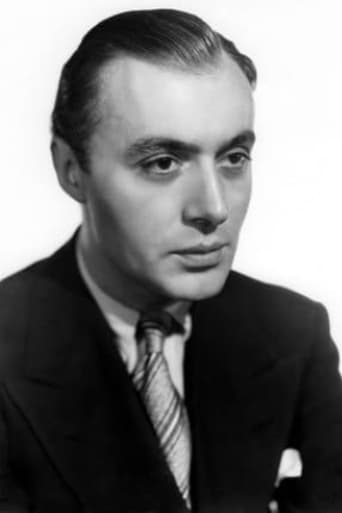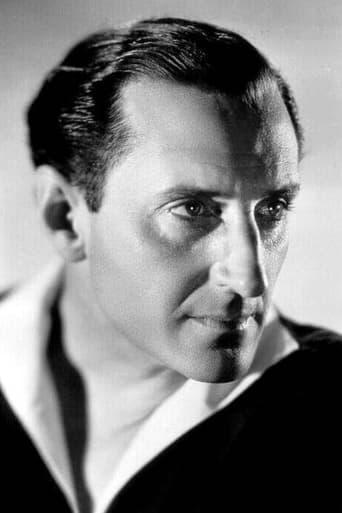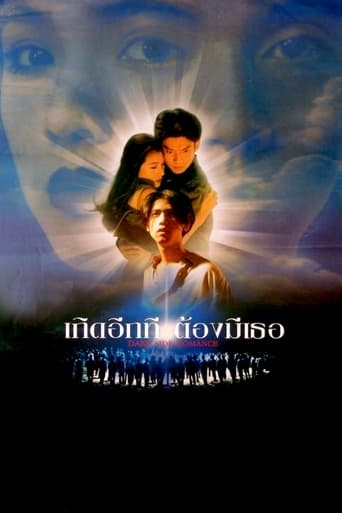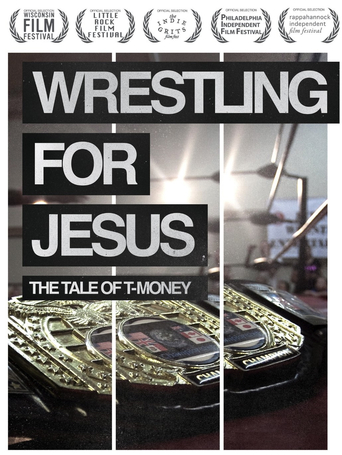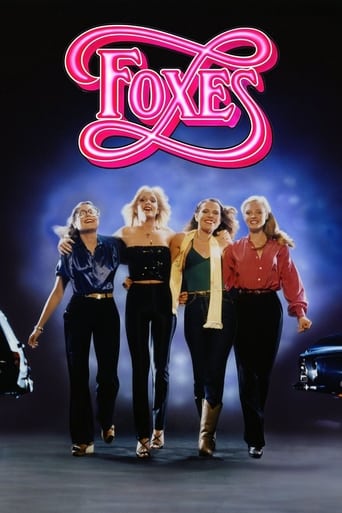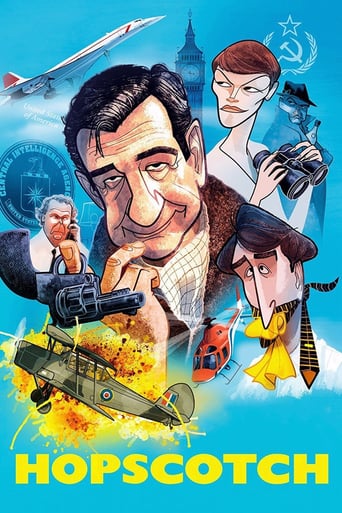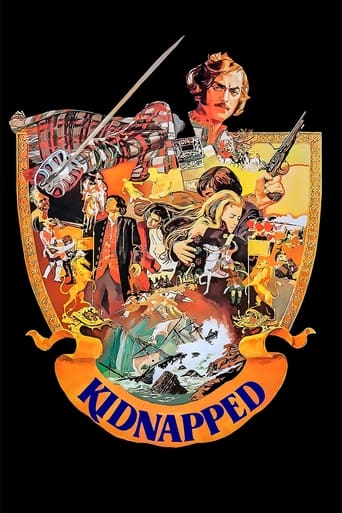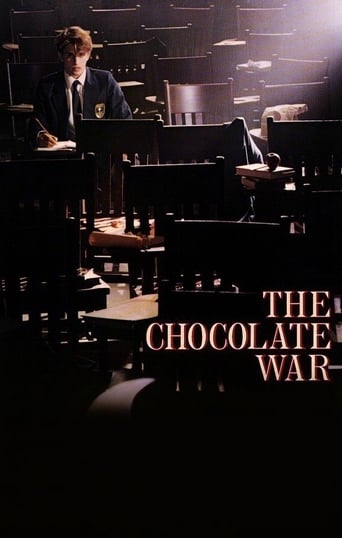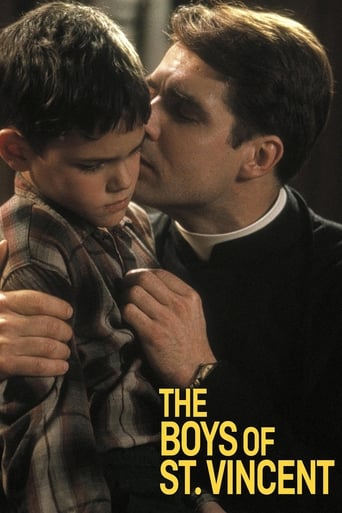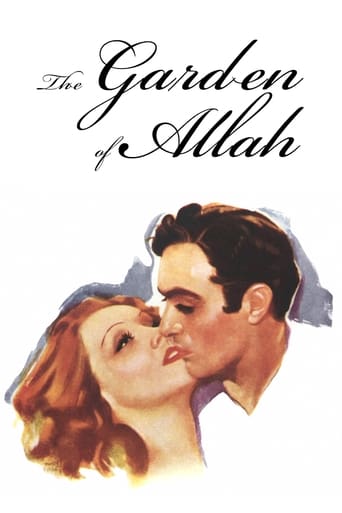
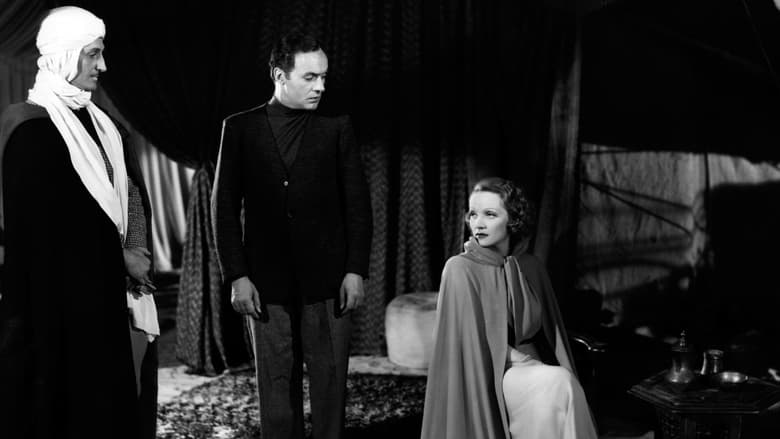
The Garden of Allah (1936)
The star-crossed desert romance of a cloistered woman and a renegade monk.
Watch Trailer
Cast
Similar titles
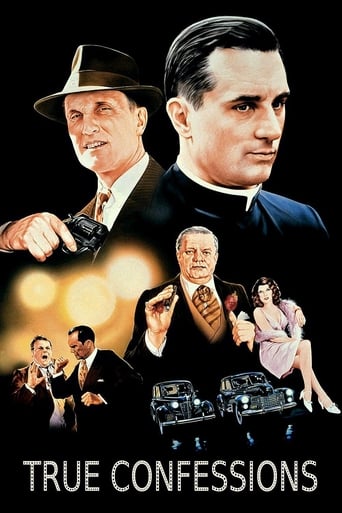
Reviews
Thanks for the memories!
best movie i've ever seen.
A lot more amusing than I thought it would be.
A terrific literary drama and character piece that shows how the process of creating art can be seen differently by those doing it and those looking at it from the outside.
This giant hunk of perfumed kitsch must have seemed old-fashioned even in 1936. It's more like a mush-talking version of silent Valentino "Arabic" romantic hokum than it is like the Maria Montez "exotica" epics of a few years later, which were more lively and less pretentious. (It's easy to imagine this story working better as a silent, and it probably did-although sadly it doesn't look like Rex Ingram's 1927 version has survived.)It's funny that Dietrich went almost directly from her last Von Sternberg film to this-another movie in which the overriding concern seems to be dressing, plucking, lighting and posing her as if for glamour stills. Richard Boleslawski is no Von Sternberg, however. He made some very good films when given better material, but he can provide none of Von Sternberg's wit, irony or distinctive lunacy to this pretty, empty package. (Sadly, Boleslawski died the next year of a heart attack, aged only 47.) Beyond the flattering photography of Dietrich and young Boyer (as well as some gorgeous silhouetted desert landscapes worthy of "The Sheltering Sky"), the major virtue in this early all-Technicolor film is the handsome color pallet, which is fairly subtle for the era. Otherwise, "Garden of Allah" is very high-end hooey, attesting to the more garish end of producer Selnick's taste, a la "Duel in the Sun." I mean, a desert-set love story between an ex-convent girl and runaway monk? With dialogue like "You come from a land of fire-and I think you are made of fire!" Plus one of those central crises made of pure hot air: The protagonists love each other like no one has ever loved anyone before (or so we're told), but must give one another up because...er, well, because that way they get to experience maximum picturesque torment and heroic sacrifice. This sort of stuff can work despite itself if there's a smidge of conviction at hand. But "Allah" (in which all Arabic spoken is gibberish, a good metaphor for the film's "soulfulness") s all so hokey and artificially high-minded you might think it had been written by Elinor Glin. No wonder it was a giant flop.
David Selznick must have seen The Sheik 14 years earlier, and decided that it was time for a similar film in color, therefore he shopped around for another really bad novel and voila! The best part of this film is without doubt the color - real fest for the eyes. for the depression audiences looking to escape the grim reality of their daily grind, it must have been overwhelming. The 3-strip Technicolor process was unbeatable and the last film I saw in that process 'My Favorite Concubine' was made 60+ years later in China and the color still stands out. My late husband told me that it was superior in that it did not fade, but it was a cumbersome and exacting process and was replaced by single strip formats which were easier to work with. Whether or not that is true, I have seen many color films fade to a horrible tint within a few years. As for the story, A young woman grieving the loss of her father visits the convent where she was raised and is advised to take a trip into the desert to find herself. Off she goes with a number of suitcases filled with designer clothing, and joins a caravan, courtesy of the local ruler. On the train she meets a mournful young handsome man, travelling with one small suitcase and wearing a rather shabby brown suit. Next evening she visits a local dive where Tilly Losch performs the same dance she gave in 'duel in the Sun', leaving the young man he mortified. Not to worry, Dominia soon hooks up with him as his tiny bottomless suitcase has produced a smart riding habit, and an even smarter tailored costume and polished riding boots to wear in the desert, and after a quick marriage they head off into the desert in a sandstorm. Surprisingly his suitcase did not contain a flowing Arab robe or even a silk dressing gown for the nighttime wear. The idyll is soon broken after a lost group of legionaries arrive and one recognizes the bridegroom as a runaway monk. After a long speech explaining that after many years in the monastery, he had just wanted to see the outside world, and a few minutes soul searching, he returns to the monastery. Both weep. End of story!Charles Boyer is excellent as the mysterious darkly handsome Valentino type. Marlene Dietrich is miscast as the deeply religious wife, and the story never rises above the type of chaste pulp romance aimed at 13-year old girls, which we used to call 'love books'. Ms. Dietrich has about 40 costume changes with never a dry cleaners, laundry or ironing board in sight, but they are always spotless and crease free. Likewise the Arab garments which resemble an ad for Persil detergent. There is the usual dim witted native played for laughs, without which no 1930's movie was without, but it is not overdone. Otherwise, the film is gorgeous to look at. Just turn off the sound, put on your favorite music, pour a glass of wine and relax.
I rented this because Dietrich was in it and was astounded at how perfectly awful it was! Make that three of us, as we sat down anticipating a pleasant experience and after 20 minutes or so decided it was one of the worst things we'd ever seen. The plot was utterly disjointed: one thing did *not* lead to another and one was always left wondering "how did they get from there to here?" I took it home and watched it myself to see if the whole movie was that bad, and unfortunately it was. The acting (when it existed) was uninspired, possibly because the cast knew what a piece of crap they were in and simply didn't care. I thought I was watching a high school play instead of a movie and am absolutely certain I could write better dialog in my sleep - and give me a break with that god-awful "sand diviner" character! The "message" of this disaster was also infuriating, leading to a disgusting, inhumane ending reflecting the inanity of what all too many persons' idea of what "the right thing to do" consists of.Yep, the color was spectacular, but as for the writers their only way to regain their honor would have been in the Japanese tradition.
Audiences back in 1936 must have been stunned at what they were watching: a full-fledged, beautiful full-length Technicolor film. I can't say for sure, but this might have been the first one (3-strip). At any rate, it still looks beautiful over 70 years later on DVD. In fact, just how good it looks is amazing.Kudos for that have to go out to Director Richard Boleslowski, Director Of Photography Virgil Miller, Selznick International Pictures and, for the DVD - MGM Home Entertainment. All of them combined to give us one of the best-looking films of the classic-era age.I thought the story was so-so: excellent in the first half, stagnant in the second. It gave a nice message in the end, even though a lot of people might not have been happy with it. I can't say more without spoiling things.Marlene Dietrich never looked better, I don't believe, and certainly never played such a soft-hearted character ("Domini Enfilden"). Heart-throb Charles Boyer was the male star and Domini's object of affection, but some of the minor characters were the most interesting to me. People like Joseph Schildkraut as "Batouch;" John Carradine as "The Sand Diviner;" The most memorable, to me at least, was the dancer "Irena," played by Tilly Losch. Wow, there is a face and a dance you won't soon forget! I've never seen anything like it in the thousands of films I've viewed. Just seeing her do her thing was worth the price of the DVD. Looking at her IMDb resume, she was only in four movies, but they were all well-known films.Basil Rathbone, the actor who really became famous for playing "Sherlock Holmes," also is in here as is C. Aubrey Smith, another famous British actor of his day. Schildkraut, by the way, will be recognized by classic film buffs as the man who played the arrogant sales clerk in the big hit, "The Shop Around The Corner," with Jimmy Stewart and Margaret Sullivan.The beautiful direction, photography and color, and Tilly's dance, are the things I'll remember best about this movie which is a lot of good and not-so-good things all rolled into one. Had the last half hour been better - although I admire the ending - I would have rated it even higher. It's definitely one film collectors want to add to their collection.
